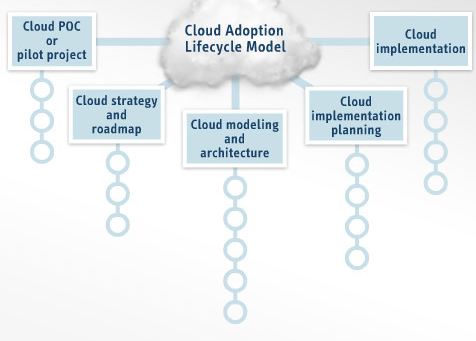In today’s digital age, cloud computing has emerged as one of the most significant technological advancements. It offers businesses the opportunity to store, manage, and process their data and applications on remote servers, eliminating the need for physical hardware and infrastructure. Cloud computing not only reduces costs and enhances flexibility but also enables businesses to scale their operations seamlessly. However, adopting cloud computing requires careful planning and implementation to ensure success. In this article, we will explore various strategies businesses can employ to facilitate a smooth transition to cloud computing.
1. Assessing Business Requirements
Before embarking on the cloud adoption journey, businesses must thoroughly assess their requirements and objectives. This involves identifying pain points and bottlenecks in the current infrastructure and determining how cloud computing can address them. It is essential to consider factors such as scalability, security, compliance, and performance to ensure that the chosen cloud solution aligns with the organization’s needs.
2. Creating a Cloud Migration Plan
A cloud migration plan outlines the steps and timeline for moving applications, data, and IT processes to the cloud. It is crucial to develop a comprehensive plan that accounts for potential risks and challenges such as data transfer, downtime, and application compatibility. Prioritizing workloads based on criticality and complexity can help minimize disruptions during the migration process. Additionally, businesses should invest in adequate training and resources to support employees through the transition.
3. Selecting the Right Cloud Service Model
Cloud computing offers different service models, including Infrastructure as a Service (IaaS), Platform as a Service (PaaS), and Software as a Service (SaaS). Each model has its own benefits and considerations. Businesses should evaluate their requirements and choose the most suitable model. For instance, organizations that require complete control over their infrastructure may opt for IaaS, while those seeking a pre-configured environment may find PaaS more suitable. SaaS, on the other hand, provides ready-to-use applications for immediate deployment.
4. Ensuring Data Security and Compliance
Data security is a critical concern when adopting cloud computing. It is essential to understand the security measures implemented by the cloud service provider and evaluate their compliance with industry standards and regulations. Implementing encryption, access controls, and regular audits can help safeguard sensitive data. Additionally, businesses should define clear data ownership and usage policies to ensure compliance with privacy laws.
5. Managing Costs and Scalability
Cloud computing offers businesses the advantage of cost optimization and scalability. However, without effective cost management strategies, organizations may experience unexpected expenses. It is crucial to monitor and optimize resource usage regularly. This can be achieved by choosing the right instance sizes, leveraging autoscaling capabilities, and utilizing cost monitoring tools provided by the cloud service provider. Predicting future growth and capacity requirements enables businesses to scale resources based on demand, ensuring optimal performance.
6. Implementing Disaster Recovery and Business Continuity
With data and applications hosted on remote servers, businesses must have robust disaster recovery and business continuity plans in place. Cloud computing provides inherent advantages for disaster recovery, including data replication across multiple geographic regions and automatic backups. Organizations should define recovery time objectives (RTO) and recovery point objectives (RPO) to determine the acceptable downtime and data loss. Regular testing of the recovery mechanisms is vital to ensure their effectiveness in real-world scenarios.
7. Continuous Monitoring and Optimization
A successful cloud adoption strategy does not end with the migration. It is crucial to continually monitor and optimize the cloud environment to maximize performance and cost efficiency. Implementing monitoring tools and establishing key performance indicators (KPIs) can help track resource utilization, identify bottlenecks, and optimize workloads. Regularly reviewing and revising the cloud strategy based on evolving business requirements ensures continued success.
Conclusion
Cloud computing offers businesses unparalleled opportunities for growth, cost savings, and scalability. By following the adoption strategies discussed in this article, organizations can navigate the cloud migration journey successfully. Assessing business requirements, developing a detailed migration plan, selecting the right cloud service model, ensuring data security and compliance, managing costs and scalability, implementing disaster recovery measures, and continually monitoring and optimizing the cloud environment are essential steps towards a successful cloud adoption strategy. Embracing cloud computing will position businesses to thrive in the digital era, providing them with the agility and competitive advantage needed to succeed.


